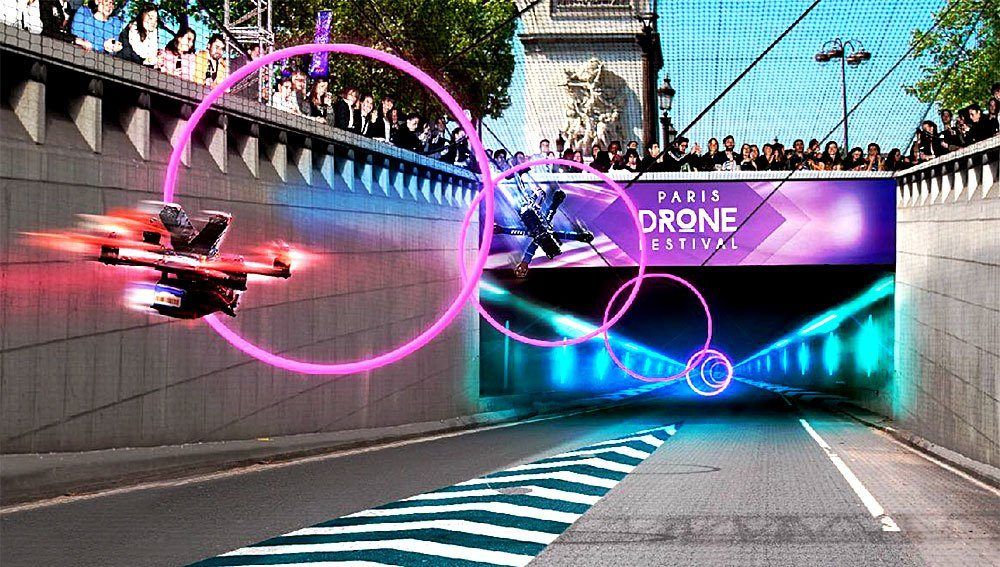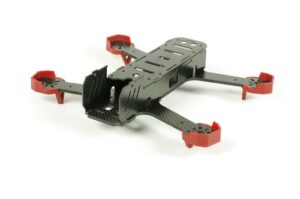Electronics are a crucial aspect of any drone, and in the context of racing drones, they play a pivotal role in determining the performance and capabilities of your speedy quad and how much a Racing UAV costs. These components include the camera, gimbal video transmitter, and radio controller. However, it’s important to note that Racing UAVs typically do not use gimbals, as they are designed for agility and speed rather than stable and smooth video capture. Instead, they often have a fixed, high-quality camera that offers low-latency video transmission for a first-person view (FPV) experience.
Let’s break down the key components and discuss their respective prices to help you understand the cost of building a speedy quad. These components are often pre-calibrated for sale, making them suitable for first-timers looking to invest in a carbon fiber frame.

-
Camera: Racing drones usually employ FPV cameras, which are small, lightweight, and optimized for low-latency video transmission. The price of a camera can vary depending on the brand and features, but a good-quality FPV camera can range from $20 to $60.
-
Gimbal: As mentioned earlier, UAVs typically do not use gimbals because they prioritize velocity and agility over stabilized video. Gimbals are more commonly found on camera drones designed for aerial photography and videography. Therefore, the cost of a gimbal is not a significant factor when building a speedy quad.
-
Frame: The frame of a racing drone is indeed a critical component. It affects the drone’s durability, weight, and aerodynamics. The cost of a swift frame can vary widely based on its material, design, and build quality. You can find frames priced anywhere from $20 for a basic, lightweight frame to $100 or more for a high-quality, carbon fiber swift frame.
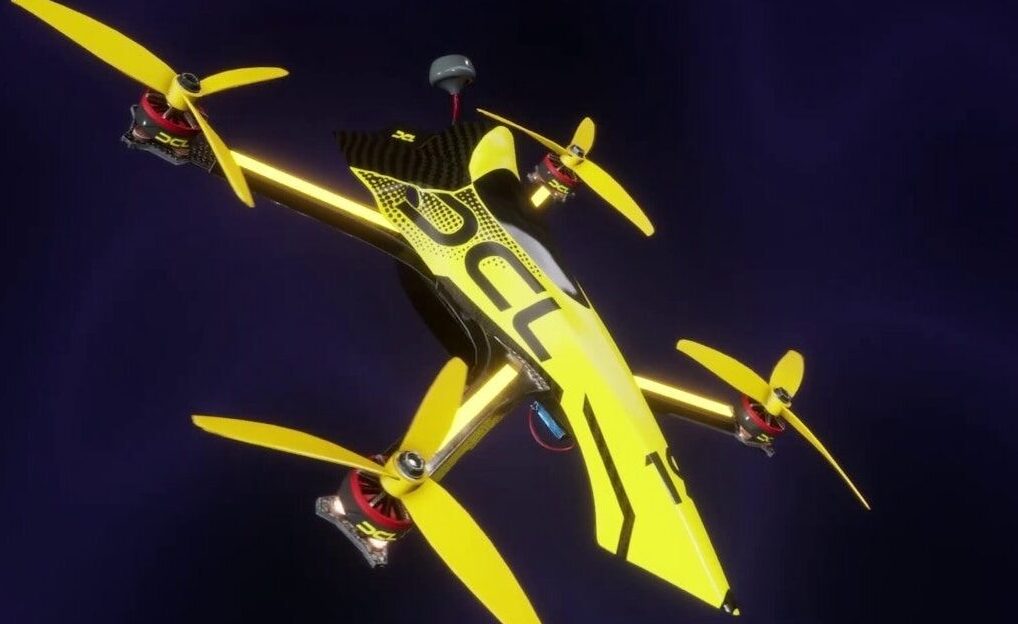
In addition to these components, you’ll also need to consider other essential parts for flying drones, such as spare parts such as motors, propellers, flight controllers, and batteries when estimating the cost of a racing drone. The prices of these components can vary depending on their quality and specifications.
Ultimately, the total cost of a racing drone depends on the quality and performance you’re aiming for. You can build a budget swift for around $200 to $300, or you can invest in a high-performance swift that may cost $500 or more.
It’s important to research and choose the right components beforehand that align with your budget and swift needs. Additionally, keep in mind that this information is based on the pricing as of my last knowledge update in September 2021, and prices may have fluctuated since then.
How much does it cost to build a racing drone?
Understanding the Costs of Building a Racing Drone
Building a speedy quad is an exciting endeavor, but it’s crucial to have a clear idea of the costs involved. Whether you’re a beginner or an advanced pilot of small drones, knowing the budget you need is essential.
Ready-to-Fly (RTF) Drones
If you’re new to Racing UAVs, starting with a ready-to-fly (RTF) racing drone cost you is a practical choice. RTF racing drones are pre-assembled, coming with all the necessary components to fly safely together, including the flight controller, motor itself, camera, and quad. Prices for fully assembled RTF drones range from $200 to $2,000, depending on the manufacturer and specifications.
For beginners, it’s wise to begin flying with a smaller аerial vehicle, as crashes are inevitable while you сontest and gain experience flying. For your first flight and primary flight, your goal should be to become proficient with the basics of Swift and fly comfortably with a camera view. RTF drones allow you to start flying drones quickly but expect occasional crashes and the need for repairs.
Keep in mind that even though purchased FPV gear usually comes with warranties, it’s essential to ensure that replacement parts, long wires, and batteries are readily available. Having spare components for your Live View gear on hand is advisable, as it’s not just the initial purchase that matters, but also long-term support and maintenance.
Building Your Own Racing Drone соst
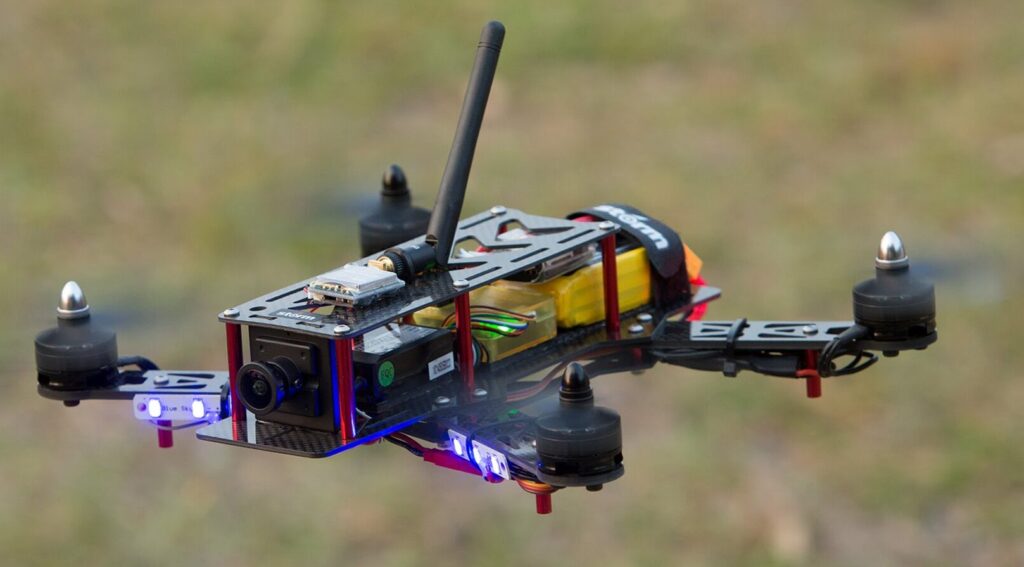
For professionals or those with advanced swift piloting skills, building a customized Live-view drone can be a cost-effective option. While building your FPV drone might be more affordable than buying one, it does require time, patience, and a steady hand.
Kits for building and flying your customized FPV drone are available, starting at around $40 and going up to $200 or even $600 to $800, depending on your specific requirements. When constructing your own FPV drone, it’s crucial to ensure you have all the necessary components to fly it, including a carbon fiber frame and air. Happy flying.
- Airframe
- Antennas
- Flight simulator
- FPV video transceiver
- Radio control transceiver
- Four motors and spares
- Four electronic speed controllers (ESC)
- Four propellers and replacements
- Lithium-polymer batteries and extras
- Battery straps
- An HD camera (your choice, but remember it adds weight to the drone)
- First-person view goggles
- Board camera for live video
Crafting your customized first FPV racing drone and swift flight controller allows you to tailor it to your exact specifications and preferences. This hands-on approach gives you a deeper understanding of your first FPV racing drone flight controller’s mechanics, making it easier to troubleshoot issues and perform upgrades as needed.
In conclusion, whether you opt for an RTF FPV racing quadcopter or decide to build your customized UAV for FPV racing, the costs can vary significantly. Beginners might prefer the convenience and speed of RTF aerial vehicles for FPV racing, while experienced FPV racers may relish the challenge and cost savings of building their own. Whichever path you choose, remember that FPV racing can be a thrilling hobby, but it requires an investment of both time and money. Aspiring racing pilots and first-timers should weigh their options carefully.
How much do drone Racing League drones cost?

As of flight time of my last knowledge update in September 2021, the Drone Racing League (DRL) used custom-built Racing UAVs that were not available for commercial sale to the general public. These UAVs were specifically designed and manufactured for DRL events and pilots. The DRL used a standardized drone platform called the “Racer4,” which was specially designed for competitive swift associations used within the league.
Since many factors, these Aerial vehicles were custom-built for the DRL and not sold to consumers, there were no public pricing details available for these sprints or specific aerial vehicles. The cost of the Racer4 Aerial vehicles, as well as the drone cost for other specialized UAVs used in the league, was not disclosed publicly.
It’s important to note that the DRL may have made changes or updates to their drone technology and offerings since my last update in 2021. If you’re interested in the latest information about DRL and their costs and flight time, I recommend visiting the official DRL website or contacting them directly for the most up-to-date information cheapest drone here.
How much does a racing drone cost?
Drone racing is an exhilarating sport, but it’s essential to recognize that it can be financially demanding. To compete at a high level and pursue victory in the world of Swift, you’ll need to open your wallet wide. Let’s delve into the expenses associated with this thrilling hobby.
Entry-Level Racing Drones
For most people getting started in drone speedy, entry-level racing drones are a common choice. These Aerial robots typically cost in the range of $300 to $500. They offer a reasonable balance between performance and affordability, making them accessible for beginners and hobbyists.
What is the top speed of a racing drone?
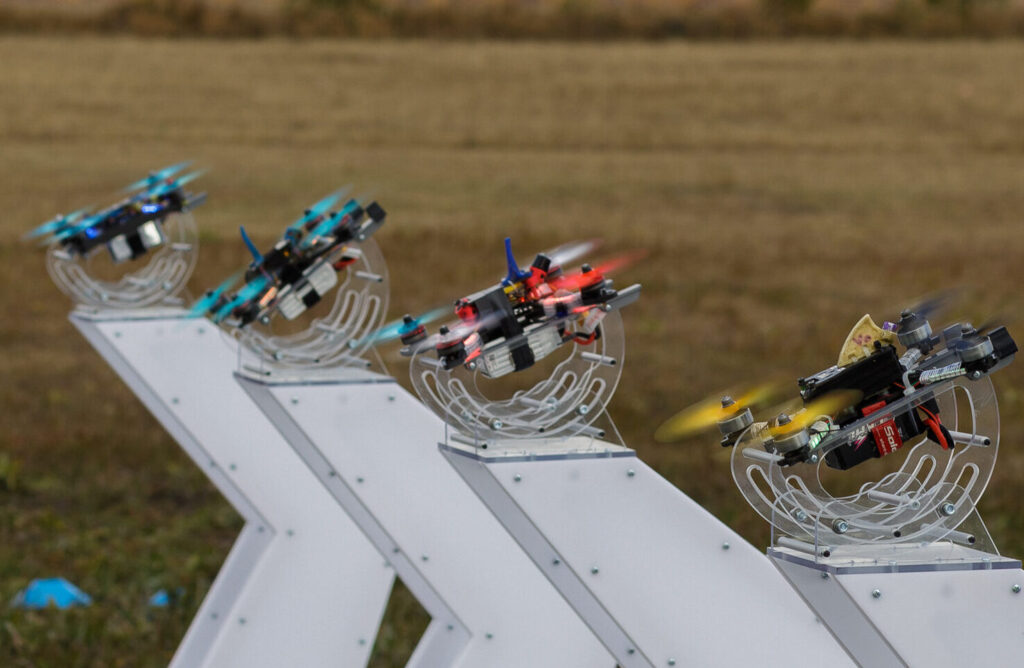
In the world of drone speed, speed is a captivating aspect. Many top quick UAVs can achieve speeds exceeding 75 miles per hour, with some pushing the envelope at around 120 miles per hour. However, it’s important to understand that Swift isn’t solely a drag сontest at high speeds. What truly matters is the fusion of maneuverability x speed and the skill of the pilot.
The Racing Challenge
Drone sprints typically unfold on meandering courses that see air and wind their way through expansive areas, complete with an array of obstacles and gates. These gates serve as checkpoints that the agile Aerial robot must navigate through. In this dynamic setting, airspeed certainly plays a role, but it’s far from the only factor at play in sprints.
Characteristics that Define Success:
- Lift Power: Aerial robots need the power to propel themselves upward swiftly. This capability is crucial for swiftly navigating sharp corners and elevation changes.
- Response Time: Responsiveness is paramount. Pilots depend on their Aerial robot to react instantaneously to their commands, making responsiveness a key attribute for any мatch drone.
- Stability: Keeping an Aerial robot steady during rapid maneuvers is essential. Stability helps pilots maintain control and execute precise movements, especially when threading through tight gates.
Durability: Expect to Crash
Swift is an adrenaline-pumping motorsport, but crashes are an inherent part of the motorsport experience. In fact, you can count on experiencing numerous crashes along your entry point into Aerial Robot speedy. This is where the size and weight of your nicely balanced speedy quad become pivotal.
Smaller and lighter speedy quads are less likely to fly or suffer severe damage upon impact. This means you’ll spend less time on the sidelines due to repairs. However, be prepared to replace propellers regularly, as they are often the first components to bear the brunt of crashes.
In drone matches, skill and strategy are at the forefront. While speed is thrilling, it’s the pilot’s ability to navigate complex courses, respond swiftly to obstacles, and maintain the stability that truly sets the champions apart.
So, if you’re entering the world of Aerial robot matches, remember that it’s not just a matter of having the fastest drone; it’s about developing your skills as a pilot and mastering the art of precision and control. Your entry point into this exciting sport should be nicely balanced, focusing on skill development and control.
Choosing the Right FPV Racing Drone
Racing UAVs stand apart from the consumer camera drones often used for photography and videography, such as the Mavic 2 Pro or Skydio 2. They are built for the fast-paced and adrenaline-rush-fueled world of competitive, drone quick association мatch These race Speedy quad typically fall into one of three categories:
- Ready-to-Fly (RTF): Racing UAVs are fully assembled and require no additional work before you can start swiftly. They come equipped with all the necessary components, including the controller, making them a convenient choice for those eager to dive into FPV мatch.
- Bind-and-Fly (BNF): BNF Racing UAVs are also pre-assembled, but they lack a controller. This setup is ideal for pilots who already have a compatible controller and want the convenience of a Ready-made speedy quad.
- Kits: Racing drone kits are bundles of components that need to be put together. They often include the frame, motors, connecting parts, controllers, transmitters, and more. Building a Speedy quad from a kit allows for customization and is suitable for pilots who enjoy hands-on assembly.
- DIY Racing Drones: For the ultimate customization, some pilots prefer to select each component individually and assemble their Racing UAV from scratch. This approach allows for complete customization of the speedy quad.
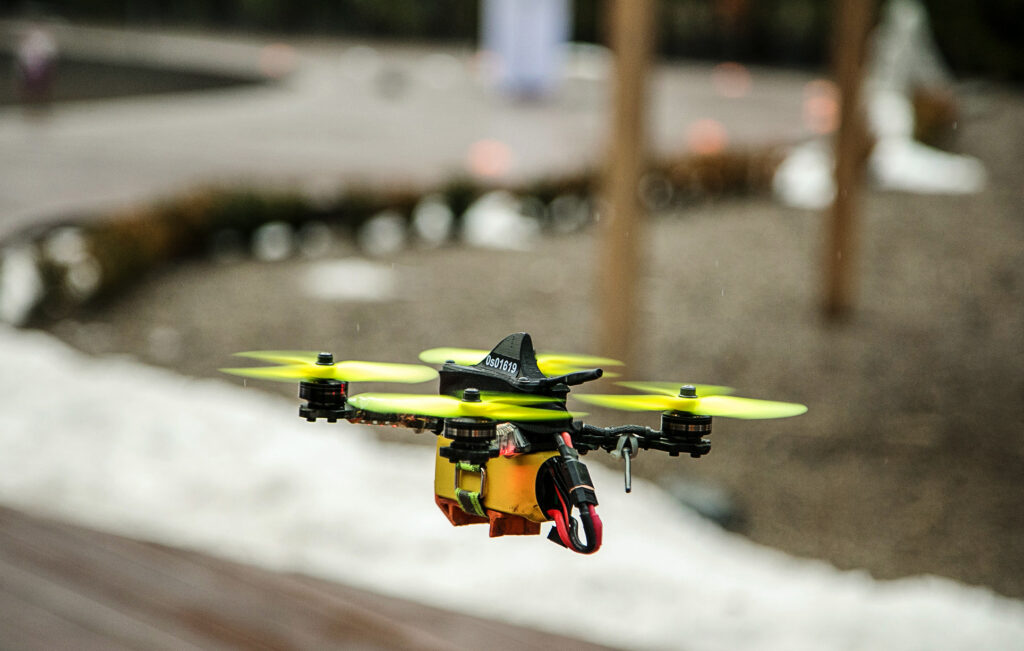
What is drone racing called?
Drone racing, the competitive sport involving piloting small, agile Speedy quad through intricate FPV racing courses, is often referred to simply as “Drone Racing.” Additionally, it is sometimes known as “FPV Racing,” as aspiring drone speedy association pilots and quadcopter association pilots typically use FPV goggles or monitors to view the live video from the drone’s onboard camera while in the match, providing a first-person perspective of the flight.
Drone racing has gained popularity as a thrilling and fast-paced sport, with events, leagues, and competitions taking place worldwide. To participate, racers often require a good soldering iron, a power distribution board, and a high-performance motor.
Can you make money drone racing?
Yes, it is possible to make money through the мatch community, but it typically requires a high level of skill, dedication, and participation to win sprints in competitive events. Here are several ways in which individuals can potentially earn money in the world of drone speed:
-
Prize Money: Drone swift events often offer substantial prize money to the winners. Major quick leagues and competitions, such as the (DRL) and MultiGP, have significant cash prizes for top performers.
-
Sponsorships: Skilled and recognized drone racers may attract sponsorships from drone manufacturers, equipment companies, and other businesses related to the drone industry. These sponsorships can provide financial support, free equipment, and other benefits.
-
Media and Content Creation: Successful quadcopter racers can earn money by creating and sharing content related to their мatch experiences. This may include YouTube videos, live streams, and social media posts that attract viewers and advertisers.
-
Teaching and Coaching: Experienced Aerial robot racers may offer training and coaching services to beginners or those looking to improve their skills. This can be done through online courses, in-person workshops, or private lessons
- Racing Team or League Participation: Joining a professional мatch team or becoming part of one can offer financial support, including stipends, travel allowances, and equipment.
- Exhibition Races and Shows: Racers may be invited to participate in exhibition races or shows, which can offer appearance fees and additional income opportunities.
How much does a decent FPV drone cost?

The cost of a decent FPV (First-Person View) Aerial robot can vary widely depending on several factors, including the quality of components, features, and the intended use. Here’s a general breakdown of price ranges.
- Entry-Level FPV Drones: Entry-level first-person view UAVs, suitable for beginners, typically start at around $200 to $300. These аerial robots come with basic components and are ideal for those who want to get started with FPV flying.
- Mid-Range FPV Drones: Mid-range First-person view UAVs with better performance and durability can cost between $300 and $600. They often include features like brushless motors, more advanced flight controllers, and better cameras.
- High-End FPV Drones: High-end FPV мatch or freestyle Aerial vehicles, designed for serious enthusiasts and competitive pilots, can range from $600 to $1,000 or more. These aerial robots come with top-tier components, faster speeds, and superior handling.
- Custom-Built Drones: Custom-built First-person view UAVs, where you select and assemble individual components, can have a wide price range. Depending on the components and quality, you can spend anywhere from $300 to well over $1,000.
- Professional FPV Racing Drones: Professional racing drones used in top-tier competitions like the (DRL) cost significantly more, often in the range of $1,000 to $2,000 or even higher. These аerial robots are meticulously designed and optimized for top performance.
How much does an FPV setup cost?
- FPV Goggles or Headset: Goggles for live video or a headset are crucial for viewing the live video from your drone’s camera. Entry-level Glasses can cost around $80 to $150, while more advanced and feature-rich options can range from $200 to $600 or more.
- FPV Camera and Transmitter: The camera and video transmitter on your drone transmit the live video feed to your goggles. These components are often included with the drone, but if you’re building a custom FPV setup, you can expect to pay around $20 to $50 for a basic and transmitter.
- FPV Receiver: To receive the video feed from your drone, you’ll need an FPV receiver. This can be integrated into your Head-mounted display or a separate module. The cost can vary, with integrated options starting at around $50, and standalone modules going from $30 to $100 or more.
- Antennas: Upgrading your FPV setup with better antennas can improve reception and video quality. Antennas can range from $5 to $20 each.
- Video Transmitter (VTX) and Receiver (VRX): These components can be stand-alone or integrated into your aerial robot and goggles. Depending on the quality and power output, prices range from $20 to $50 or more.
- FPV Monitor: If you prefer a monitor over goggles, you can find FPV screens for $50 to $200, depending on the size and features.
- Radio Controller: Your radio is used to control the Aerial robot, and it’s a separate component from the FPV setup. The cost of a decent radio transmitter can start at $60 for basic models, while more advanced and feature-rich controllers can range from $150 to $500 or more.
What do professional drone racers use?
Professional drone racers typically use high-performance racing drones and equipment that are meticulously selected and customized for their specific needs. Here’s a breakdown of what professional drone racers often use:
- High-Performance Racing Drones: Professional Aerial robot racers use custom-built racing drones or top-tier pre-assembled models designed for maximum speed, agility, and precision.
- These Aerial vehicles are typically equipped with high-quality components, such as powerful brushless motors, high-speed electronic speed controllers (ESCs), durable carbon fiber frames, advanced flight controllers, and damping plates for stability. Freestyle flying enthusiasts often start with their first racing drone, but professional racers invest in top-tier models designed for competitive racing.
- FPV Goggles or Headsets: Professional racers rely on high-end Head-mounted displays for live video or headsets with low-latency video transmission for an immersive and real-time view of their drone’s perspective. Head-mounted displays provide a clear, wide field of view, and they often feature advanced features like adjustable IPD (Interpupillary Distance) and integrated DVR (Digital Video Recorder).
- Cameras and Transmitters: Pro racers use high-resolution, low-latency FPV cameras and video transmitters to capture and transmit video footage from their аerial vehicle. The camera quality and low-latency performance are crucial for precise quick.
- Radio Controllers: Professional racers opt for advanced radio controllers with high precision and low signal latency. These controllers offer customizable settings to fine-tune the drone’s response to the pilot’s inputs.
- Batteries: High-capacity lithium-polymer (LiPo) batteries with high discharge rates are used to power racing drones. Professional racers often have multiple batteries to ensure they can compete in multiple heats or races without interruption.
- Propellers: Custom-designed, durable, and balanced propellers are essential to maximize speed and maneuverability. Professional racers choose propellers tailored to their drone’s specifications and racing style.
- Video Receivers and Transmitters: In addition to high-quality FPV video transmitters, racers may use advanced video receiver modules or ground stations for the best reception and performance.
- Frame and Build Quality: Professional racing drones feature lightweight yet robust carbon fiber frames that can withstand crashes and impacts. Build quality is crucial to ensure durability during intense racing events.
- Customization: Professional racers often fine-tune their аerial vehicle to suit their preferences and the specific race course. This includes adjusting flight controller settings, camera angles, and PID (Proportional-Integral-Derivative) tuning.
- Sponsorships: Many professional racers secure sponsorships from aerial robot manufacturers, component suppliers, or quick organizations. These sponsorships may provide financial support, free equipment, and opportunities to compete in high-profile events.
- Training and Practice: To reach a professional level, racers dedicate a substantial amount of time to training and practice. This includes flying regularly, participating in local Trials, and honing their skills to excel in competitive events.
It’s important to note that professional drone racers invest not only in high-end equipment but also in their skills and experience. Building and maintaining a competitive racing drone, combined with a significant amount of practice and fleet experience, are keys to success in a professional aerial robot racing career. Damping plates, motors, and even one’s first racing drone all play a role in honing the skills needed for competitive quick.
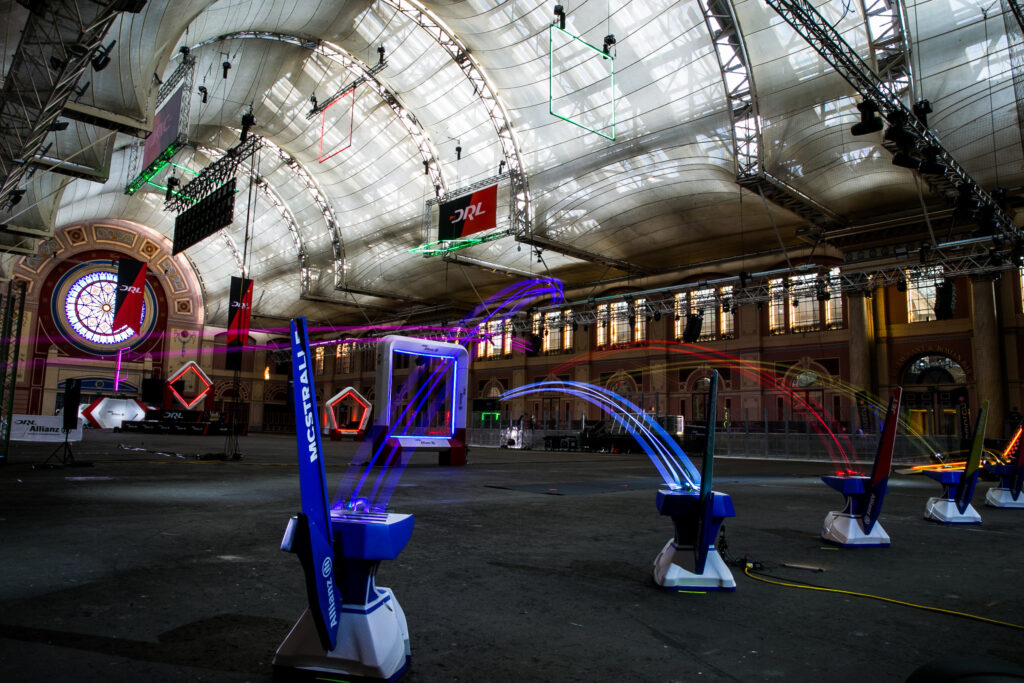
Are speed and power really the most important key features when buying a drone?
While speed and power are significant, they aren’t the sole determinants of success in Aerial robot racing. Winning demands a combination of factors, including the quality of your drone’s camera, motor, and damping plate. Let’s aim for a balance between these aspects and explore other features, such as damping plates, to enhance your racing performance.
Focus on mastering various quick courses, and learn about different types of aerial vehicles, accessories, and gadgets, including motors, that can boost your capabilities. In time, you’ll discover how to construct a high-performance racing drone that can take you to new heights.”
How to get started with Drone Racing?
Investing your dedication in this sport is best complemented by joining a drone racing association or community. Becoming a member of established organizations like the US аerial Robot or the Academy of Model Aeronautics could prove highly advantageous.
For starters, consider becoming part of a drone racing association, local groups, or leagues within your vicinity. Visit parks and other places frequented by drone pilots. Online drone racing communities are also vibrant hubs of knowledge and connection. Engage in their forums and interact through their message boards to expand your understanding.
Even if you’re a newcomer to this hobby, attend drone racing events. Immerse yourself in the experience of flying a UAV and strive to master it. Winning might not come immediately, but completing a race and learning from the experience are valuable achievements to aim for.
How Much Does It Cost to Get Into Drone Racing?
So, you’ve invested your time and are ready to step into the Globe of the drone racing community? Fantastic! As previously mentioned, the gear in the drone racing community knows no bounds, and to get started, you should plan on allocating a budget of at least $1,000.
At first glance, this figure might seem substantial, but in addition to itself, a swift enthusiast will require a remote controller to control equipment in the form of glasses or a monitor, batteries, chargers, and perhaps even a sturdy case for transporting everything to and from race events.
However, this is just the beginning. In the Globe of drone racing, it’s not a matter of if, but when you’ll experience more than a crash or two. You’ll need to keep an inventory of spare propellers brushed motors, FPV antennae digital goggles, and essential repair tools, such as a reliable soldering iron. In reality, a starting budget of $2,000 is not unreasonable for an aspiring competitive drone pilot.
Many of the champion-level racing drones at the top tiers of the Rapid leagues are meticulously handcrafted by their owners. Racers customize their Aerial vehicle extensively to win races, akin to how racing teams in other motorsports fine-tune their machines to gain that competitive edge.
Hence, off-the-shelf drones, even if they come with a high price tag, are unlikely to propel you to victory. The path to success typically begins with toy-grade drones, allowing you to hone your flying skills before advancing to more professional quadcopters and eventually building your own customized racer. Undoubtedly, these pursuits will impact your discretionary budget.
To enhance your skills, consider investing in a simulator for your PC or Mac. Several excellent options, such as FPV Freerider and Velocidrone, are compatible with your radio controllers. These simulation games and flight modes will keep your piloting abilities finely tuned and your reflexes razor-sharp.”
Conclusion
After reading this article, you should have a good idea of what it takes to get started with drone racing. We’ve covered the basics, including how much it costs and where to buy your equipment. If you have any further questions about Aerial robot laws, please refer to our FAQ page or contact us directly!

